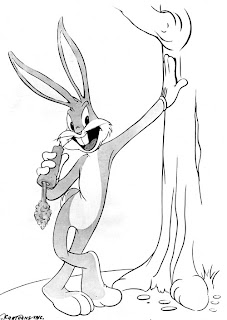Project Description:
After understanding the history of the illuminated letter you will be explore the contemporary counterpart. Create a series (3) of illuminated letters based on the visual language of an artist(s), designer(s), architect(s) of your choosing.
Project Overview:
I very much enjoyed this project. It allowed for absolute freedom. The main reason I enjoyed this project was that I was abale to sketch and utilize many different mediums to try and represent artist I personally look up to. Thinking back over my artists I would have done the exact same ones but would have liked to do another for Jim Henson, I mean come on the muppets in space was great! I may in the future go back and create more drop caps for other artists or even create more for the artists I have studied for this assignment. All in all this was my favorite project of the year.
Tuesday, September 7, 2010
typefacer, adrian frutiger
Born the son of a weaver in Switzerland, Adrian Frutiger designed the easy to read typeface we know as Univers. He started out with a strong intrest in sculpture but was pressed by his elders to take a look into the print world. At sixteen he had apprenticed for four years. He then went on to study sculpture, graphic design, and illustration at the Zurick Kunstgewerbeschule. Soon after he began work at Deberny&Peignot. Later he established a design studio in Paris. There he became a freelance typographer, where he designed typefaces, logos, and numerous corporate images. His main goal was to create a very legible form of type. This form was to be translated efficiently. In 1957 he designed Univers, a typeface that was to be neutral and universal(hints the name). Today, Univers is one of the most standard typefaces used. When 1969 rolled around, Adrian designed another typeface, Frutiger. This time it was for the signage system for Charles de Gaulle Airport. Frutiger as a typeface was to be rapidly recognizable and readable. Nowadays the same typeface is used on all motorway signs in Switzerland and France. Adrian, in 1978, published a book on the standard works on typography. Since the year 1992, Adrian Frutiger has been living in Switzerland and is still alive today.
Univers
Unique because it was the first to categorized by numbers.
The grid system used is to show the variations in comparison to each other. This includes various widths, heights, and positions
Univers
Unique because it was the first to categorized by numbers.
The grid system used is to show the variations in comparison to each other. This includes various widths, heights, and positions
Sunday, August 29, 2010
measuring variation
weight: overall thickness of the stroke, in relation to their height
width: how wide the letterform in a typeface are in relation to their height
style: divided into serif and sans serif, it also refers to the typeface's history
today we measure type from top of the ascender to the bottom of the descender
point: size of the type with units 0.35mm (pts)
pica: 6 picas to an inch (p)
36pts=1/2 in, 12pts=1p
x-height: the distance between the baseline and the mean line in a typeface
cap height: the height of a capital letter above the baseline for a particular typeface
leading: refers to the amount of added vertical spacing between lines of type
Thursday, August 26, 2010
Tuesday, August 24, 2010
defining definitions.
grid: regularly spaced horizontal and vertical lines
- the use of a grid allows for an organized way of displaying a designer's ideas. it is an easy way to read concept; good for compare/contrast
modular grid: a grid with four rows and four columns
margins: the negative space between the format edge and the page contents
module: an individual component that can placed with others
flow-lines: alignments that break the space into horizontal bands
gutter: blank space between columns
hierarchy: a way to level the information portrayed in importance, this makes it easier for the viewer to navigate through.
- by grouping like materials and placing them in a visually pleasing alignment, one can create an excellent sense of hierarchy. to do this one can shift the image or create a much more significate size contrast.
typographic color: something different. a change in the rhythm, value, texture and weight of text that makes it either recede or be drawn forward to the eye and can sometimes dramatically change the hierarchy of the text.
Subscribe to:
Comments (Atom)










